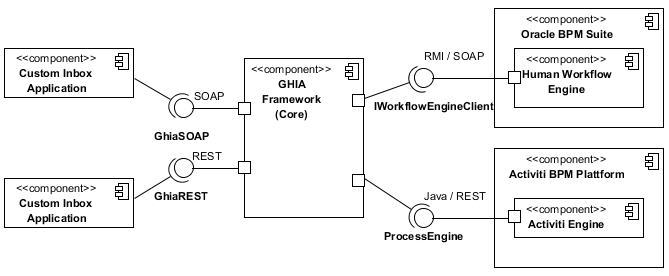IT infrastructures and systems following the SOA paradigm are build upon standards. In such scenarios BPMN 2.0 can be used for the automation of business processes for example. The processes can be executed by a process engine. In such business processes the integration of human actors is often needed, to make complex decisions that cannot be made by a machine. The communication between the human actor and the process engine is done by tasks, which are often managed by separate task engines. Authorized users are able to work on the tasks using a provided task UI, a so called inbox or tasklist application. As one can see there are at least two consumers for the services provided by a task engine: the task UIs and the process engines.
Although a specification, the WS-HT (WS Human Task) specification, for the standard-based integration of human interaction in SOA is available, task engine interfaces are vendor-specific and not standard-based actually, e.g. using RMI or native Java method invocation for communication. This leads to the following problems:
- Portability issues
- Interoperability issues
- Tight coupling
To deal with the problems of vendor-specific interfaces in the area of human interaction, I defined a adapter framework, the Generic Human Interaction Adapter (GHIA), which provides a interface that is based on the definitions propagated by the WS-HT specification. Features of the GHIA-Framework are a standard-based interface (SOAP based on WS-HT and REST) and the opportunity to transparently communicate with more than one task-engine, e.g. for the synchronization of different inboxes. Scenarios where the GHIA-Framework can be used, delivering a great benefit, are:
- Integration scenarios (more than one task-engine is used)
- Decoupling scenarios (e.g. for decoupling task UIs from the vendor-specific inerfaces)
- Migration scenarios (when moving from one release to a higher one, to ensure that long running process with human interaction can be ended within the older versioned plattform)





1 Kommentar
We are a group of volunteers and starting a brand new scheme in our community.
Your website offered us with valuable info to work on.
You have performed an impressive job and our entire
group will likely be grateful to you.